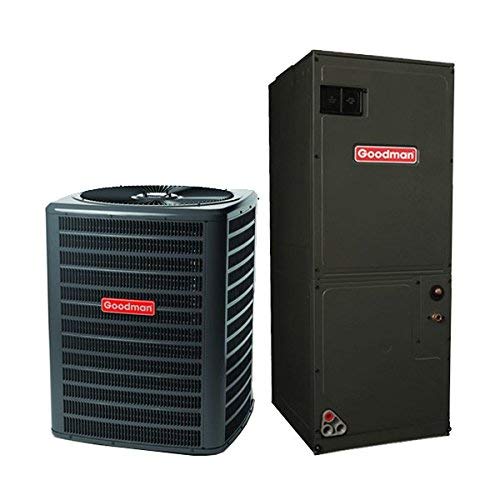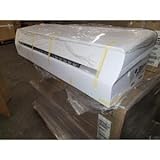Are you tired of constantly adjusting your thermostat in order to maintain a comfortable temperature in your home? Have you considered upgrading to a heat pump system? Trane is a well-known brand that offers high-quality and reliable heating and cooling solutions. In this article, we will explore the different types of Trane heat pumps, their benefits, as well as important factors to consider before making a purchase. Get ready to discover why Trane heat pumps are some of the best options on the market according to consumer reports!
Top 10 Trane Heat Pumps
*Note: Score is based on our AI score (Editor’s choice and rating).
What Is Trane Heat Pump?
Trane heat pump is a heating and cooling system that uses electricity to move heat from one location to another. It works by transferring hot air outside during warm weather, and bringing warmth inside your home during cold weather. Unlike traditional HVAC systems, Trane heat pumps don’t generate temperature; instead, they transfer it from one place to another.
This technology makes Trane’s heat pumps more energy-efficient and eco-friendly than other heating and cooling options on the market. They can also be used year-round for both heating and cooling purposes, making them versatile systems that can adapt to changing temperatures throughout the seasons.
Trane offers several types of heat pumps suitable for different homes and climates. From ground source systems that extract geothermal energy from underground wells or loops, to air-source units that utilize outdoor air as their source of energy – there are many options available depending on your needs.
Trane heat pump is an excellent choice for anyone looking for a reliable way to maintain comfortable temperatures in their home while reducing their carbon footprint at the same time!
How Does Trane Heat Pump Work?
Trane Heat Pumps work by transferring heat from one location to another. They use electricity to move warmth from the outside air or ground into your home during winter, and they reverse the process during summer months to provide cool air.
The main components of a Trane Heat Pump include an outdoor unit, which houses the compressor and coils responsible for extracting heat energy from the air or ground. The indoor unit contains a blower fan that circulates conditioned air throughout your home.
When in heating mode, refrigerant inside the outdoor unit absorbs heat energy and evaporates into gas form before traveling through a copper tubing line into the indoor unit. Here, it releases its heat energy as it condenses back into liquid form before being pumped back outside and repeating the cycle.
During cooling mode, this process simply reverses itself so that warm air is extracted from your home’s interior spaces while cooler air is blown back indoors.
By utilizing renewable sources of energy like ambient temperature differences between indoor/outdoor environments or underground geothermal reservoirs, Trane Heat Pumps are more efficient than traditional HVAC systems.
The Different Types of Trane Heat Pump
Trane offers a range of heat pumps to meet different needs and budgets. The main types of Trane heat pumps are air-source, geothermal, and mini-split systems.
Air-source heat pumps work by extracting heat from the outdoor air and transferring it indoors to warm up your home. They are the most common type of Trane heat pump, as they’re affordable and easy to install.
Geothermal heat pumps use the earth’s constant temperature to provide heating and cooling for your home. These systems require more upfront investment but can save you money on energy costs in the long run due to their high efficiency.
Mini-split systems consist of an outdoor unit connected via refrigerant lines to one or multiple indoor units that distribute conditioned air throughout your home. They offer flexibility in zoning so you can customize comfort levels for different areas.
Each type has its benefits, so it’s important to consider factors such as climate, budget, and personal preferences when choosing which Trane model is best suited for your needs.
Factors to Consider Before Buying Trane Heat Pump
Before investing in a Trane heat pump, there are several factors you should consider to ensure that it meets your needs. First and foremost, you need to determine the size of the unit required for your home or building. This is determined by calculating the total square footage of the area to be heated and cooled.
Another important factor is energy efficiency. Look for models with high SEER (Seasonal Energy Efficiency Ratio) ratings as they consume less energy, meaning lower utility bills for you. You may also want to consider whether the model has ENERGY STAR certification.
Noise level is another crucial factor that many consumers tend to overlook when purchasing a heat pump. Higher-end models often have sound-dampening features which can greatly reduce noise levels during operation.
You should also check if there are any rebates or incentives available from local or federal governments that could help offset costs associated with installation and purchase of a new system.
Don’t forget about maintenance requirements – regular maintenance will ensure your unit lasts longer and operates efficiently throughout its lifespan.
Benefits of Using Trane Heat Pump
There are several benefits of using a Trane heat pump, which makes it an excellent investment for homeowners looking to upgrade their HVAC system.
Firstly, one of the most significant advantages of using a Trane heat pump is its energy efficiency. Unlike traditional heating and cooling systems that rely on fossil fuels like oil or gas, a heat pump uses electricity to transfer heat from one place to another. This means you can save up to 50% on your energy bills compared to conventional heating and cooling systems.
Secondly, Trane heat pumps offer consistent heating and cooling throughout your home without relying on ductwork – unlike central air conditioning units or furnaces. This makes them ideal for homes with unique layouts or those who are looking for zoned temperature control.
Thirdly, Trane’s heat pumps provide clean air quality because they don’t produce any combustion byproducts like carbon monoxide that could harm your family’s health as well as the environment.
Investing in a high-quality brand such as Trane ensures that you’ll have access to top-rated customer support if something goes wrong with the system. With great warranties available too, this helps customers feel secure in their purchase decision.
There are many reasons why choosing a Trane Heat Pump is beneficial for both comfort and budget-conscious homeowners alike!
The Pros and Cons of Trane Heat Pump
Trane heat pumps are high-quality HVAC units that can provide both heating and cooling for your home. While they come with many benefits, there are also some drawbacks to consider before making a purchase.
One of the biggest advantages of Trane heat pumps is their energy efficiency. They use electricity to transfer heat instead of burning fuel, which means they can save you money on your utility bills in the long run. Additionally, Trane offers models with seasonal energy efficiency ratios (SEER) over 20 and heating seasonal performance factors (HSPF) over 10, which are among the highest ratings available.
Another benefit of Trane heat pumps is their durability and reliability. These units are built to last and come with strong warranties to back them up. Plus, Trane has a reputation for producing quality products that perform well for years.
However, there are some potential downsides to consider as well. One common issue reported by consumers is noise levels during operation. Some models may produce more sound than others depending on placement and installation.
Additionally, while Trane’s prices may be competitive within its market segment, they tend to be higher than other brands on average – so budget-conscious buyers might need alternatives.
Though if you’re looking for an efficient and durable HVAC unit that will keep your home comfortable all year round – then a trane Heat Pump could be just what you need!
Tips For Setting Up Your Trane Heat Pump
Setting up your Trane heat pump properly can ensure maximum efficiency and comfort for your home. Here are some tips to help you get started.
Firstly, choose the right location for your heat pump. The unit should be placed in an area with good air flow and away from any obstructions that could block the airflow.
Secondly, make sure that the outdoor unit is installed on a flat surface and secured properly to prevent it from vibrating or moving during operation.
Thirdly, ensure that the refrigerant lines are well-insulated to minimize energy loss and prevent condensation buildup.
Fourthly, set the thermostat to match your desired temperature settings. This will allow your heat pump to operate at optimum levels while keeping you comfortable at all times.
Schedule regular maintenance checks by a certified technician. This will help identify any issues early on before they become major problems that can affect performance and increase energy costs.
By following these simple tips, you can enjoy a more efficient heating system that provides reliable comfort throughout the year.
FAQs
FAQs:
1. What is the lifespan of a Trane heat pump?
The average lifespan of a Trane heat pump is around 15-20 years, but it can vary depending on factors such as usage and maintenance.
2. How often should I schedule maintenance for my Trane heat pump?
It’s recommended to have your Trane heat pump serviced twice a year – once in the spring before cooling season begins, and again in the fall before heating season begins.
3. Can I install a Trane heat pump myself or do I need to hire a professional?
Installing a Trane heat pump requires technical knowledge and experience, so it’s best to hire a certified HVAC technician for installation.
4. Are there any rebates or incentives available for purchasing and installing a Trane heat pump?
Yes, there are many local and federal programs that offer rebates or tax credits for installing energy-efficient heating systems like Trane heat pumps. Check with your state or utility company to see what incentives are available in your area.
5. What type of warranty does Trane offer on their products?
Trane offers warranties ranging from 5-10 years on their products, depending on the specific model and components included in the system. Be sure to read through the warranty details carefully before making your purchase decision.
Conclusion
Trane heat pumps are an excellent investment for homeowners who want to keep their homes comfortable all year round while saving on energy costs. With different types and models available, there is a Trane heat pump that can fit your specific needs.
Before purchasing a Trane heat pump, it’s essential to consider factors such as size, efficiency rating, and budget. It’s also crucial to have the unit installed by a professional HVAC technician.
Trane has established itself as one of the leading manufacturers of heating and cooling systems in the industry. If you’re looking for a reliable and efficient way to control your home’s temperature throughout the year, then choosing a Trane Heat Pump could be an excellent decision for you.
I’m Ella Andrews, owner of the website https://bestconsumerstips.com/
I give you valuable information about good products to help you choose the best product.











